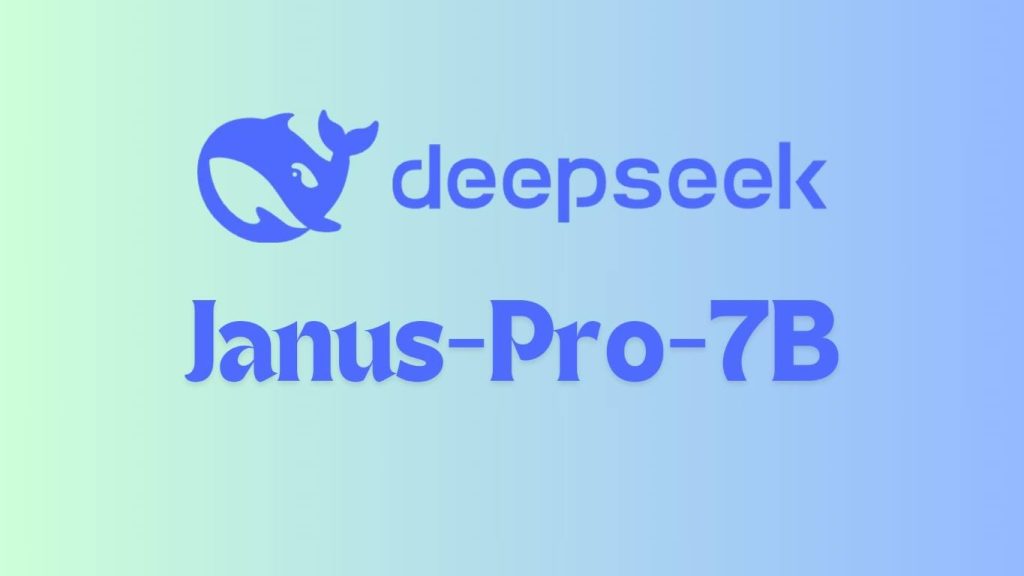DeepSeek has presented its latest launch: the Janus-Pro-7B and its accompanying family of multimodal models. This innovative suite is designed to analyze and generate images, positioning itself as a competitor against established giants like OpenAI’s DALL-E 3. With the promise of superior performance backed by an MIT license, these models are set to revolutionize how developers and businesses approach image generation.
Janus-Pro-7B Overview
What is Janus-Pro-7B?
At the heart of DeepSeek‘s new offerings is Janus-Pro-7B, a cutting-edge multimodal model that boasts an impressive 7 billion parameters. These parameters are crucial because they directly relate to the model’s ability to understand and generate complex data, including images. Janus-Pro operates on what DeepSeek describes as a “novel autoregressive framework,” allowing it not only to create but also analyze images effectively.
This model is part of a broader family that ranges from smaller versions with 1 billion parameters up to the powerful 7 billion variant, making it versatile for various applications. Users can expect high-quality outputs that rival those produced by leading competitors in the field.
Key Features of Janus-Pro-7B
The standout features of Janus-Pro-7B include:
- Multimodal Capabilities: It can handle both text and image inputs, making it suitable for diverse applications.
- High Flexibility: The architecture allows for easy adaptation across different tasks without needing extensive retraining.
- Open Source Accessibility: Being under an MIT license means that developers can use it commercially without restrictions, encouraging widespread adoption.
| Feature | Description |
|---|---|
| Parameter Count | 7 Billion |
| License | MIT |
| Input Capability | Text & Image |
| Output Quality | High-quality image generation |
These features position Janus-Pro-7B as a strong contender in the race for advanced AI models.
Performance Comparison
Janus-Pro-7B vs DALL-E 3
When comparing Janus-Pro-7B to OpenAI’s DALL-E 3, DeepSeek claims significant advantages in performance metrics. In recent evaluations using GenEval and DPG-Bench benchmarks, Janus-Pro demonstrated superior capabilities across various tasks compared to DALL-E 3 and other notable models like PixArt-alpha and Stability AI’s Stable Diffusion XL.
While DALL-E has been lauded for its creative prowess, early reports suggest that Janus-Pro-7B manages to outperform it in specific criteria such as versatility in handling diverse prompts and generating more contextually relevant images. This competitive edge could mark a shift in preference among developers seeking robust tools for their projects.
GenEval and DPG-Bench Results
The GenEval and DPG-Bench results provide concrete evidence of where Janus-Pro-7B excels:
GenEval Scores:
- Higher accuracy in interpreting prompts
- Better contextual understanding leading to more relevant outputs
DPG-Bench Performance:
- Superior image quality metrics
- Enhanced detail retention during generation processes
Both benchmarks highlight how well this new model performs relative to its contemporaries, suggesting that it might be time for developers to rethink their go-to options when working with AI-generated content.
Open Source Advantage
MIT Licensing Benefits
One of the most compelling aspects of DeepSeek’s release is its commitment to open-source principles through an MIT license. This licensing offers several benefits:
- Commercial Use Freedom: Developers can integrate these models into commercial products without worrying about licensing fees or restrictions.
- Community Engagement: An open-source approach encourages collaboration among developers worldwide, fostering innovation through shared insights.
- Transparency and Trust: Users can inspect the codebase themselves, promoting trust in how these models function internally.
As many companies move towards open-source solutions due to their adaptability and cost-effectiveness, DeepSeek’s strategy aligns perfectly with current industry trends.
Community Contributions and Support
With an open-source model like Janus-Pro-7B, community contributions are invaluable. The potential for collaborative improvement means users can submit enhancements or bug fixes back into the main repository on platforms like GitHub (check out DeepSeek’s GitHub page). This creates a feedback loop where users help refine the technology while benefiting from collective knowledge.
Moreover, community support often leads to faster troubleshooting; users encountering issues can share solutions quickly within forums or discussion boards dedicated specifically to DeepSeek’s technologies. This communal aspect not only accelerates development but also enriches user experience by fostering a sense of belonging among contributors.
In summary, with features designed for flexibility, performance metrics that challenge existing standards like DALL-E 3, along with strong community backing facilitated through open source principles—DeepSeek’s introduction of Janus-Pro-7B marks an exciting chapter in artificial intelligence development!
Frequently asked questions on Janus-Pro-7B
What is Janus-Pro-7B?
It is a state-of-the-art multimodal model developed by DeepSeek, featuring 7 billion parameters. It excels in both analyzing and generating images, making it a strong competitor against models like OpenAI’s DALL-E 3.
How does Janus-Pro-7B compare to DALL-E 3?
DeepSeek claims that it outperforms DALL-E 3 in various performance metrics, particularly in versatility and contextual relevance when interpreting prompts. Benchmarks like GenEval and DPG-Bench show significant advantages for Janus-Pro-7B over its competitors.
Is Janus-Pro-7B open-source?
Yes! It is released under an MIT license, allowing developers to use it commercially without restrictions. This open-source approach promotes community engagement and collaboration among users.
What are the key features of Janus-Pro-7B?
The key features include its multimodal capabilities (handling both text and image inputs), high flexibility for adapting to various tasks, and its open-source accessibility under the MIT license.
Can I use Janus-Pro-7B for commercial purposes?
Absolutely! The MIT license allows you to integrate it into commercial products without any licensing fees or restrictions.
Where can I find support or contribute to Janus-Pro-7B?
You can find support and contribute enhancements through platforms like GitHub. Users are encouraged to share solutions and improvements within the community dedicated to DeepSeek’s technologies.
What makes Janus-Pro-7B suitable for diverse applications?
The versatility of handling both text and image inputs along with its adaptability across different tasks makes it suitable for a wide range of applications in AI development.
How does the community benefit from using an open-source model like Janus-Pro-7B?
The community benefits through collaborative improvement, faster troubleshooting, shared insights, and a sense of belonging among contributors working together on enhancing the technology.

